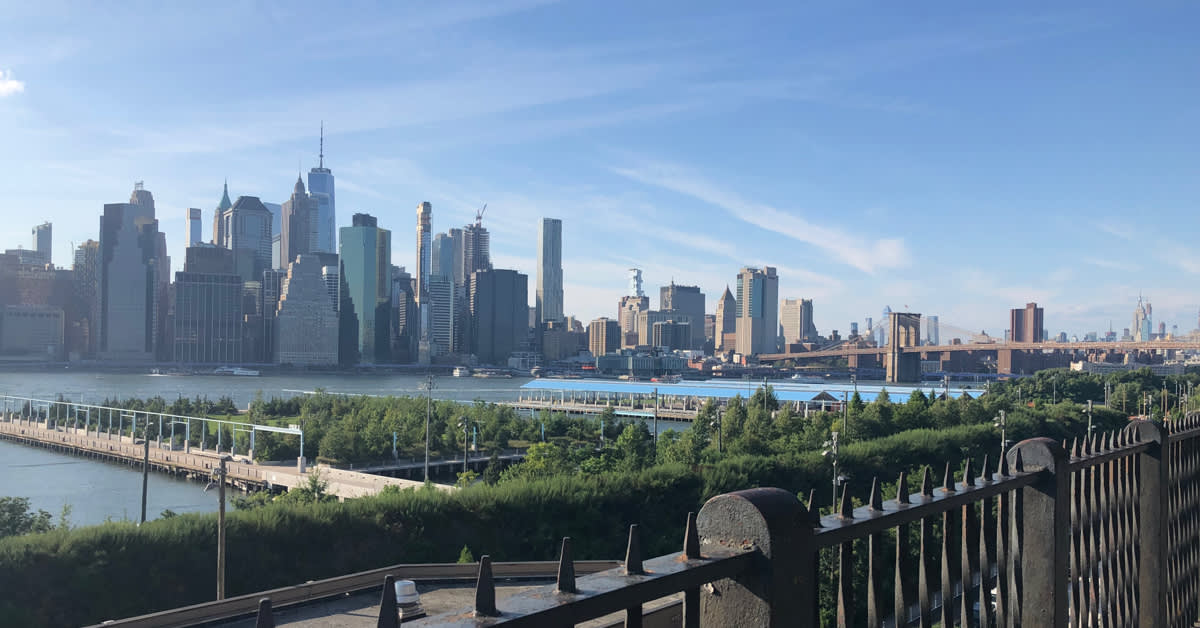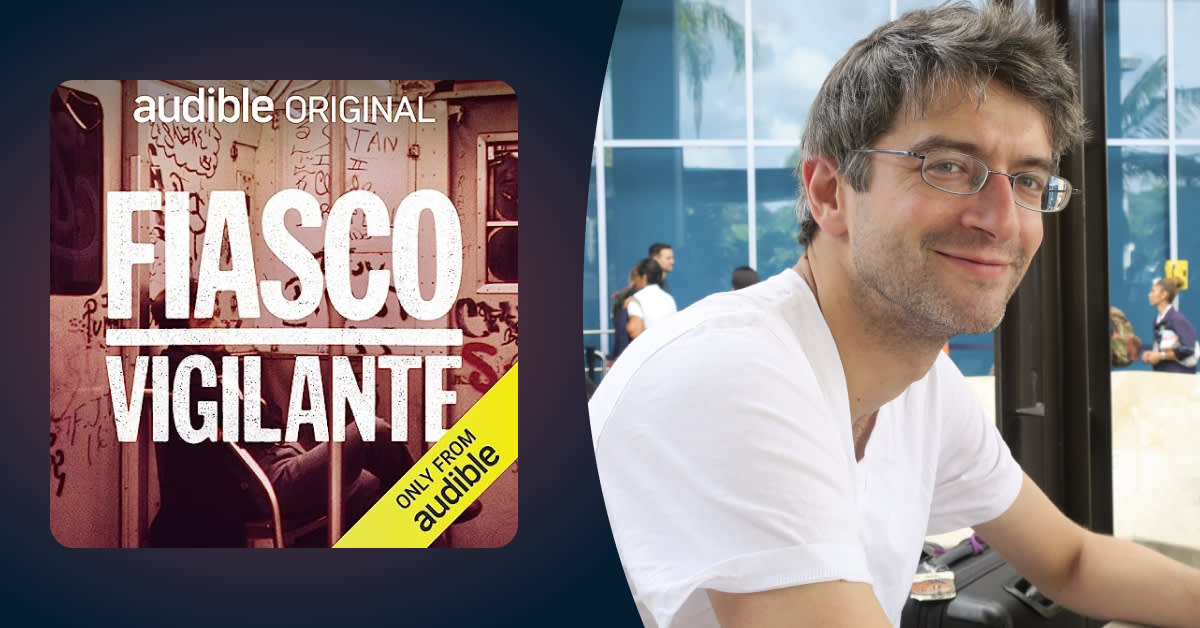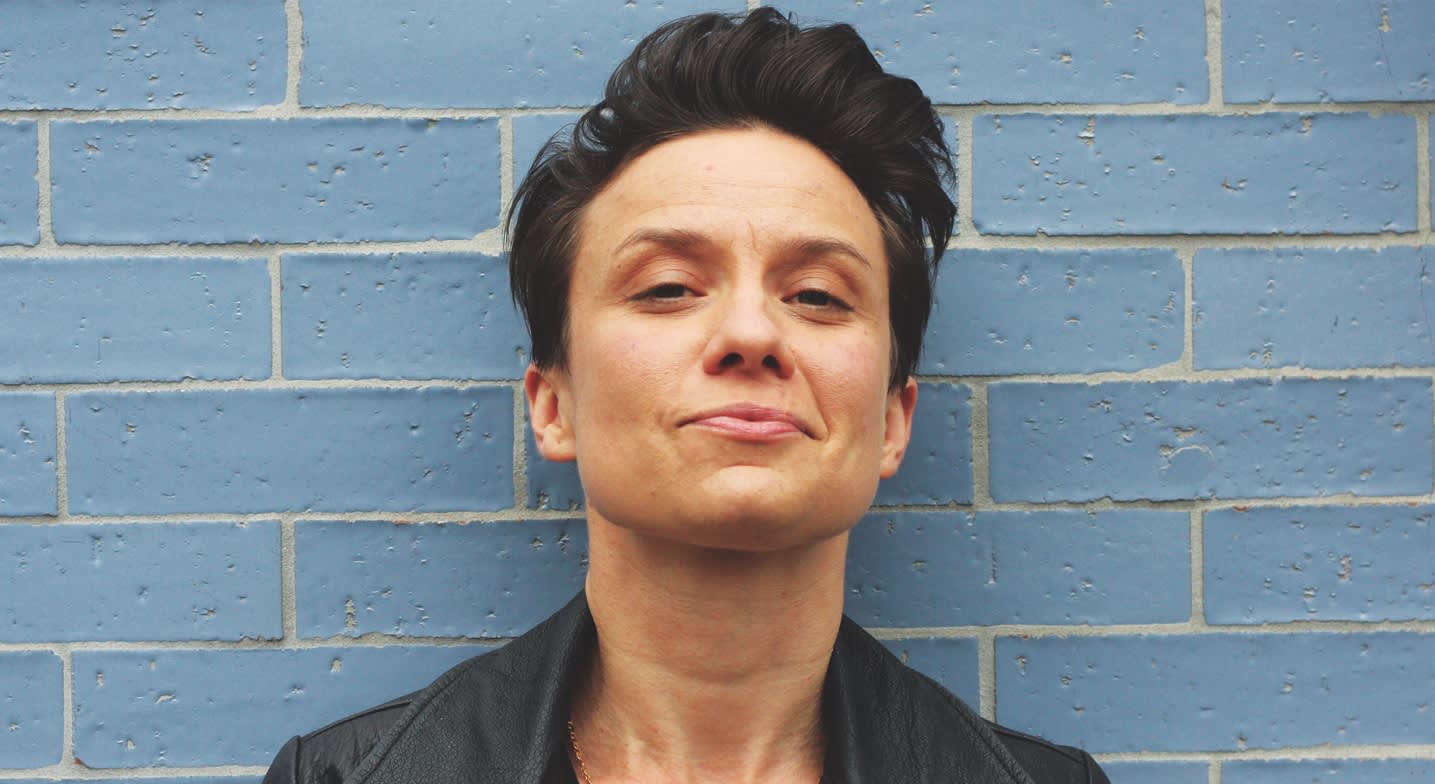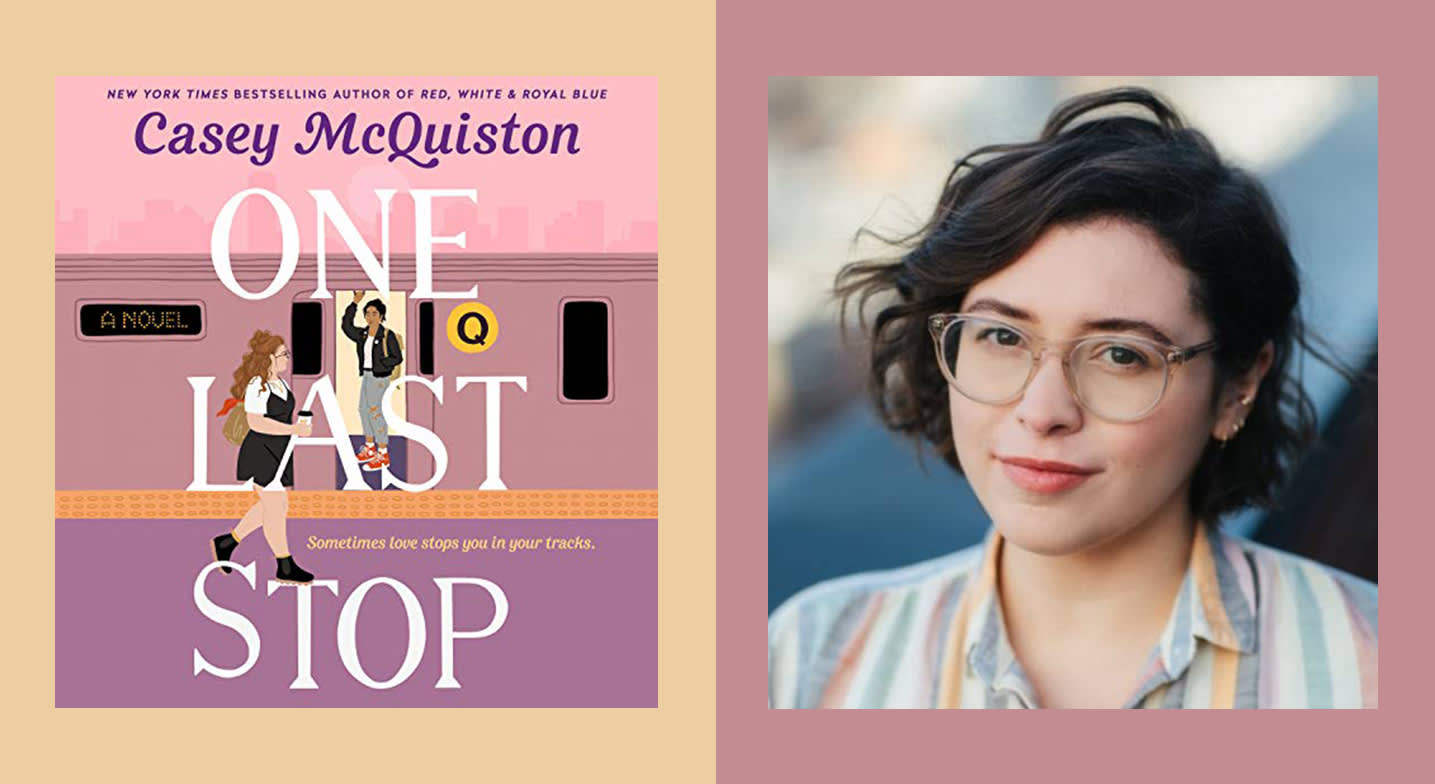Every now and again, someone will ask me whether I'd ever pick up and move somewhere else, be it a different metropolis or a more suburban domain. It's a fair question—Brooklyn born and raised, I've never lived anywhere but New York City. And though sticking to one city for a lifetime may seem a bit limiting to some, try as I might, I genuinely cannot imagine living anywhere else.
Sure, the sometimes comically exorbitant cost of living, the overstimulation of crowds, sounds, and light pollution, or a thick waft of garbage stewing in the late summer heat occasionally give me pause. But as with a longtime partner, these aren't deal-breakers. They're simply the idiosyncrasies I'm willing to overlook to keep a good thing going.
Vibrant and diverse, New York, New York, is a microcosm of the globe, home to every culture imaginable. On one city block, there's likely a multitude of international cuisines, the scent of authentic Birria mingling with Pad Thai and Jamaican beef patties. There are museums housing every artifact conceivable—centuries of precious art, exquisitely preserved fossils, vintage train cars, and curios from the sets of major motion pictures and beloved Broadway musicals. Amongst five boroughs, you'll find iconic theater, shopping, music venues, and live sports. You can walk through history, exploring bridges and memorials, public parks, and one of the largest conservation zoos in the world.
More concisely, no matter who you are, where you hail from, or what your interests are, there's a place for you here. This city's electric spirit, its rhythms and motions, its chaos and beauty, are why I can never imagine my life elsewhere. I can never leave, because New York is as much a part of me as I am a part of it. And I'm not alone—countless journalists, essayists, and memoirists have been indelibly impacted by this place too, for better, for worse, forever. Here are their stories, and in them, a living portrait of the town so nice they named it twice.
Talk about hometown pride—MacArthur fellow Colson Whitehead, one of the most acclaimed fiction writers working today, also happens to be a New York City native. The Pulitzer Prize and National Book Award winner muses on the people and places that left an impression, showing off his gift for crafting remarkable prose. In stream-of-consciousness narratives and masterful vignettes, Whitehead's prose grows legs, hustling through the city streets like a commuter trying to catch their train. Narrated by the author himself, this lyrical ode to Gotham truly soars.
Five decades ago, in a Bronx apartment complex, hip-hop was born. Recruited by his sister to play a back-to-school party in her building, DJ Kool Herc spun the night away, crafting beats that would forever change history. In Can You Dig It?, Public Enemy's Chuck D delves deeper, examining what allowed such acts of urban artistry to flourish. Illuminating the sometimes painful history of the Bronx (a borough too often disregarded for the gang violence that rose among the disenfranchised) throughout the '60s and '70s, this oral history of an era, a community, and a movement is as engrossing as it is vital.
"I too lived, Brooklyn of ample hills was mine," Walt Whitman ponders in "Crossing Brooklyn Ferry," a poem from 1855's Leaves of Grass. Fittingly, it is with Whitman and that Brooklyn waterfront that Hugh Ryan begins his exploration of Brooklyn's LGBTQIA+ history in When Brooklyn Was Queer. Spanning the decades from the Good Gray Poet's sexual exploration to the liberation of Coney Island bath houses to the postwar emergence of sexology and the origins of the Lavender scare, this sweeping, thoroughly researched volume on the pre-Stonewall queer community of Brooklyn rebuffs erasure, ensuring that their lives and their stories will never be forgotten.
It's no surprise that Rolling Stone’s David Browne knows his way around the music scene. Talkin' Greenwich Village is especially timely, the perfect listen to tune into after you’ve seen Timothée Chalamet channel Bob Dylan in A Complete Unknown. A dynamic, deeply researched, and fast-moving listen, the book weaves together the origins of creatives like Dylan; the story of Dave Van Ronk, the burly sailor who became the “Mayor of McDougal Street”; the formation of the Blues Project; and the trials and tribulations of The Roches, the sister act whose shimmering and fragile harmonies now move new generations. The Village has long since changed through the years, but this narrative gives these twisty, narrow streets their due for being the right place at the right time.
Brandon Stanton's street photography project turned bestselling book, Humans of New York is a stunning glimpse into what makes this city so special—its residents. An interview with one such New Yorker, Stephanie Johnson—better known as Tanqueray—quickly went viral, launching the saucy septuagenarian into global renown. Stanton teamed up with the streetwise superstar to document even more unfiltered, incredible stories of her life in NYC's most rough-and tumble era, surviving through wits, good humor, burlesque dance, and countless reinventions.
In Fiasco: Vigilante, Leon Neyfakh, the journalist behind scandal deep dives like Slow Burn and Fiasco: The AIDS Crisis, turns his incisive eye towards 1980s New York City, a period marked by crime, paranoia, justice, and public perception. The series elucidates the 1984 media sensation of New York’s “subway vigilante,” when a meek-looking white man ruthlessly gunned down four Black teenagers on a downtown train. The dramatic story comes to life in the brash accents of the era’s intrepid tabloid reporters and heartbreaking interviews with the victims’ families, who bring the four men to life more fully than ever before.
Part of what makes New York City so special is its rich, storied history as a place of refuge for immigrants. From the mid-1800s through the 1900s, millions of migrants from around the globe made New York their home, ultimately contributing to the city's identity as a great melting pot of cultures and backgrounds. Legendary Irish memoirist Frank McCourt was among them, arriving in America in October 1949. In 'Tis, McCourt recalls his early days in the big city, his stint in the United States Army, his time spent studying at New York University, his time teaching at the prestigious Stuyvesant High School, and more, enlivened with candor, wit, and impeccable narration.
It's not home to just pigeons and pizza rats. From sewer-dwelling alligators to the ducks bobbing in Central Park's pond, New York City is a surprisingly biodiverse landscape. A delightful guide to dozens of famed feathered, scaled, and furry city slickers, Wild City is both a handy wildlife guide for visitors to the city and a charming collection of quirky residential run-ins with a host of unexpected neighbors.
New York's culinary scene is truly unmatched, from thick-cut pastrami on rye to a fresh-off-the-griddle bodega BEC, that perfectly folded slice to eclectic eateries created by culinary world gamechangers. Celeb chef Marcus Samuelsson is one such creative, the head chef behind one of Harlem's most recognizable restaurants. Established in 2010, Red Rooster is among the city’s best spots for comfort food, serving up innovative twists on dishes like chicken and waffles, mac and greens, and sweet potato bread pudding. In Our Harlem, Samuelsson walks listeners through this vibrant neighborhood, sharing stories of its food, its history, its culture, and the community itself.
New York City is home to some of the most exceptional museums in the world—a single stretch of Fifth Ave, dubbed "Museum Mile," alone houses institutions including the Guggenheim, El Museo del Barrio, and, of course, the Metropolitan Museum of Art. And not even the most pedigreed art historian has cultivated such an awe-inspiring perspective on the Met as this jewel of a memoir, by a former New Yorker staffer-turned-museum guard. After the death of his brother, Patrick Bringley traded the literary job of a lifetime for the Met’s hallowed halls, and the result is this beautifully narrated and profound meditation on art, grief, and solace.
E.B. White, best known for his kidlit juggernaut Charlotte's Web and essential guide to The Elements of Style, is renowned for the simple goodness that hums throughout his unadorned work. That warmth translates beautifully to "Here Is New York," an essay originally published in Holiday magazine, that documents the metropolis as if it had a heartbeat of its very own. A bona fide love letter to Manhattan alight with perceptive humor, dreamy nostalgia, and endless wonder, this listen paints a fresh portrait of a city abundantly documented.
The AIDS crisis had a staggering impact on New York City, leaving a devastating aftermath the likes of which no other city in the United States had seen. Inaction and silence proved to be a massive detriment to those suffering. Accordingly, one of the most effective grassroots organizations ever founded, the AIDS Coalition to Unleash Power—better known by the striking acronym ACT UP—outwardly rejected the neglect and willful ignorance of public officials and commodification of treatment that ultimately resulted in the unnecessary death of many. In this comprehensive history of ACT UP, New York, author Sarah Schulman details the organization's ingenious acts of resistance, be they legal battles, harm reduction initiatives, or bold protest methods.
Like the subway shooting detailed in Fiasco: Vigilante, the Central Park jogger case arose at a time of heightened fear and unease surrounding crime rates in New York City. In April 1989, five Black and Latino teens were charged after confessing to the assault of a runner in the North Woods. Within two weeks, all five recanted the statements they had been pressured into making. A decade later, an incarcerated serial offender admitted he had been the perpetrator, an admission confirmed by DNA evidence. After his exoneration with the Central Park Five, Yusef Salaam became an ardent activist for criminal justice reform. In this memoir, Salaam reclaims the narrative surrounding the case and his own personhood, detailing an unimaginable circumstance with an unbreakable air of hope.
Aptly named for the final track of NYC new wave darlings Talking Heads' exquisite 1983 album Speaking in Tongues, This Must Be the Place focuses on the creative spaces instrumental to New York's cultural identity—and art and music history at large—uncovering their origins and laying bare their fates. Writer Jesse Rifkin, a former touring musician now operating music-centered walking tours in NYC, deftly examines the genesis of iconic New York music scenes, shining a light on how urban infrastructure, development, and politics play a massive role in inspiring sound and establishing community.
Winner of the 2010 National Book Award for nonfiction, Just Kids is not only a triumph in music memoir—it’s a triumph in memoir, period. In her own voice, punk poet laureate Patti Smith tells of her scrappy early days in New York City as a budding artist, supported and enthused by her friendship with the late photographer Robert Mapplethorpe. This listen is as gorgeously written and performed as you’d expect—a delicate, breathtaking rumination on a generation of lost souls.
New York City is carved into five boroughs—Brooklyn, the Bronx, Manhattan, Staten Island, and Queens—each of which has its own distinct identity and flair. And while I can't claim impartiality, I have to say there's no place in the world quite like Brooklyn. But don't just take it from me. In History of Brooklyn, hear Brooklynite Dr. Brian Purnell offer his perspective as he takes listeners on a vivid historical tour of NYC's most populous region. In this series of Great Courses lectures, Purnell traces the borough's origins back to Indigenous roots through mass immigration and the forge of our working class identity and follows its journey all the way to today's socioeconomic tensions and conversations on gentrification.
Along with serving as editor at the then-burgeoning Essence magazine, Queens native Jessica B. Harris spent five decades teaching at Queens College, CUNY before retiring. As she proves in her dazzling memoir, she still has plenty to teach us. Sparkling and scenic, My Soul Looks Back is a love letter to the creative scene of 1970s New York City and a tribute to Harris's friends and contemporaries, including Maya Angelou, James Baldwin, and Toni Morrison. Come for the evocative portrait of a living, breathing city but stay for Harris's reflections on her journalism career, lush parties, delicious meals, stimulating conversations, and all the other memories made along the way.
In Greenwich Village, there's a tavern that, at first glance, seems rather unassuming, its brick seamlessly blending into the other storefronts on Christopher Street. But in its window glows a neon sign, like a reminder: The Stonewall Inn. Now a national monument, Stonewall, which also still operates as a gay bar and safe haven for New York's LGBTQIA+ community, served as the backdrop for the origins of the gay liberation movement. This anthology, compiled by the New York Public Library, is a necessary primer on what lead up to and subsequently followed the uprising at Stonewall, a landmark moment in history that gave way to the vocal push for queer rights and visibility.
Ask any New Yorker born before the late '90s where they were when they first heard that a plane had hit the Twin Towers, and they'll likely have an answer at the ready. It was a moment of shared trauma, one seared into our collective consciousness, and there is no shortage of stories to share from that fateful day. This Audie Award-winning edition of Garrett Graff’s The Only Plane in the Sky is narrated by a cast of 45 different voices, echoing the multitude of individuals who experienced the events of the September 11, 2001 terrorist attacks firsthand. In this moving compilation of eyewitness recollections, interviews, transcripts, and documents, the day unfolds from the perspectives of those who lived it, from ticket agents and flight attendants to government officials in underground bunkers to those on the ground, searching for survivors amidst the rubble.
Robert Caro’s Pulitzer Prize-winning biography of urban planner Robert Moses is one of the most influential works of nonfiction from the 20th century, and despite its length, Robertson Dean’s engaging performance makes it easy to lose yourself in. An unflinching volume on an immensely controversial figure responsible for projects that still define much of New York's infrastructure, this listen is essential for anyone seeking a deeper understanding of how the city was built and the figure responsible for its glories and pitfalls. The Power Broker does not shy away from critiquing Moses's exclusionary, outright violent design decisions, choices marred by racism and classism, a disregard for public health, and environmental and functional complications wrought by prioritizing automobiles over mass transit and pedestrians. Instead, it provides a thorough assessment of an ambitious, influential man whose idealism and hopes for improvement soon gave way to the allure of power and control.
Okay, maybe I'm biased, but narrator Gary Cohen, SportsNet NY’s play-by-play announcer for the New York Mets, was largely responsible for my emerging interest in baseball. His enthusiasm and deep knowledge for the sport are infectious, spurring you to watch closer, absorbing every play, while his dynamic with fellow broadcasters Keith Hernandez and Ron Darling is simply unparalleled. Regardless of team allegiance, if you’re a fan of underdog stories and impeccable narration, this history of the 1969 Miracle Mets is pure magic. With wonder and grace, journalist Wayne Coffey chronicles the rise and unexpected triumph of the team, as they catapulted from league laughingstock to World Series champions.
During the height of the COVID-19 pandemic, life in New York City, like in so many places around the globe, was unlike anything we had encountered before. Sidewalks were noticeably barren—even Times Square, the perpetually bustling tourist destination, was a ghost town—and the wail of sirens became all too routine. One of the few markers of consistency and undaunted spirit happened daily at 7:00 PM, when many would throw open their windows or step onto their stoops and cheer, banging pots and pans, clapping their hands for the frontline workers who were courageously facing down a disease we knew precious little about. In Riding the Lightning, one such worker, veteran EMS technician Anthony Almojera, details the challenge of serving a city teetering on the edge, with the hospital system under staggering strain.
"No NYC lover’s library would be complete without The Island at the Center of the World. It is a special kind of magic when this level of scholarship meets this level of exquisite narrative writing. Author Russell Shorto got his hands on a massive archive of Dutch documents about the initial European colonization of New York in the early 1600s, and used them to weave a detailed and unforgettable portrait of Gotham in its infancy. On its face, this may sound like a snooze, but believe me, it’s not. Shorto brings this place and its people to life with uncanny skill. And though the Dutch only controlled Manhattan for a few decades (until they lost it to the British in 1664), the influence of that Dutch period on the Big Apple—and on America as a whole—was immense. From its very beginnings, Manhattan was an experiment in pluralism, free trade, and the rights of the individual. Move over, Pilgrims, there’s a new American origin story in town." —Editor Phoebe N.






















































